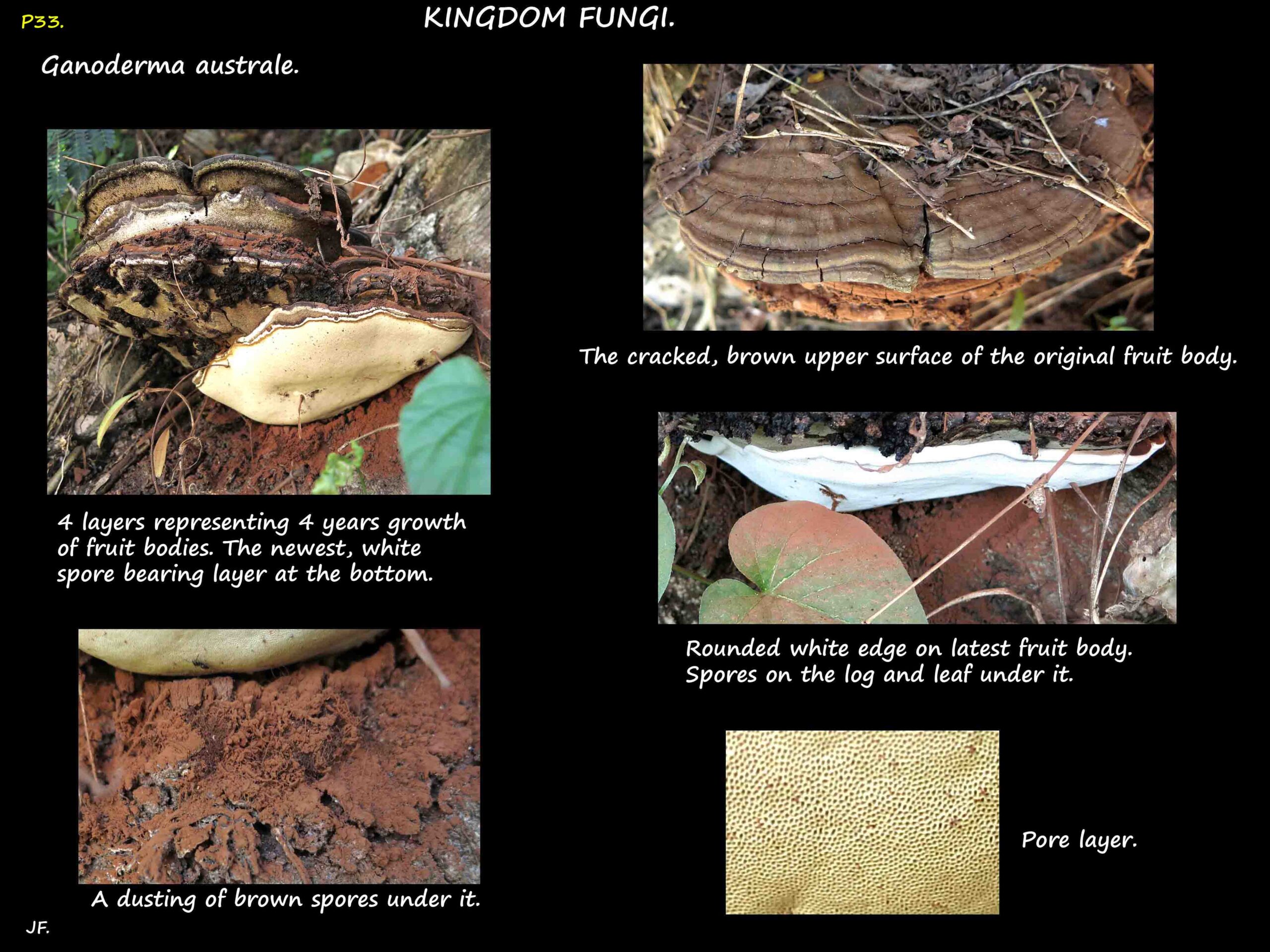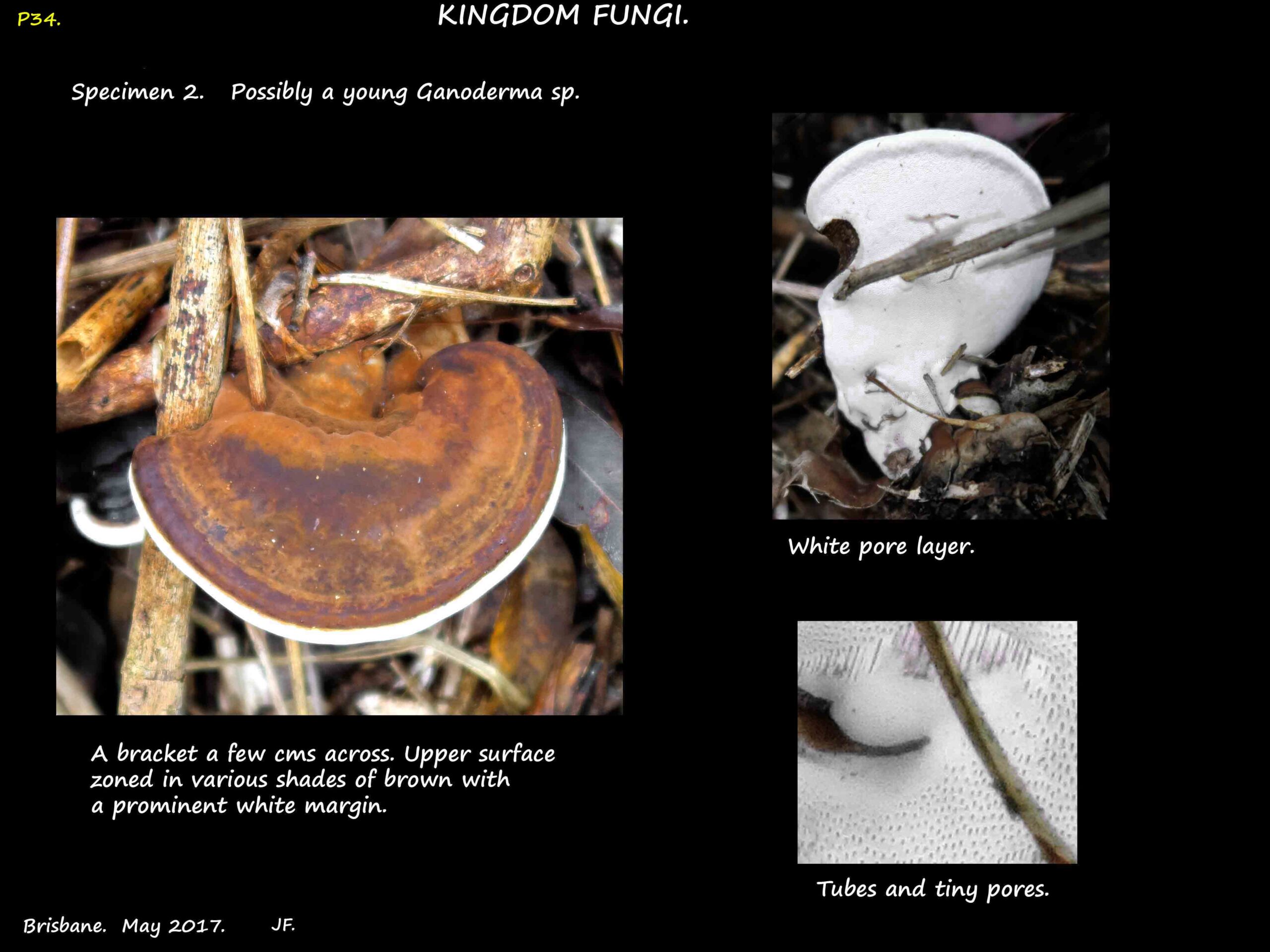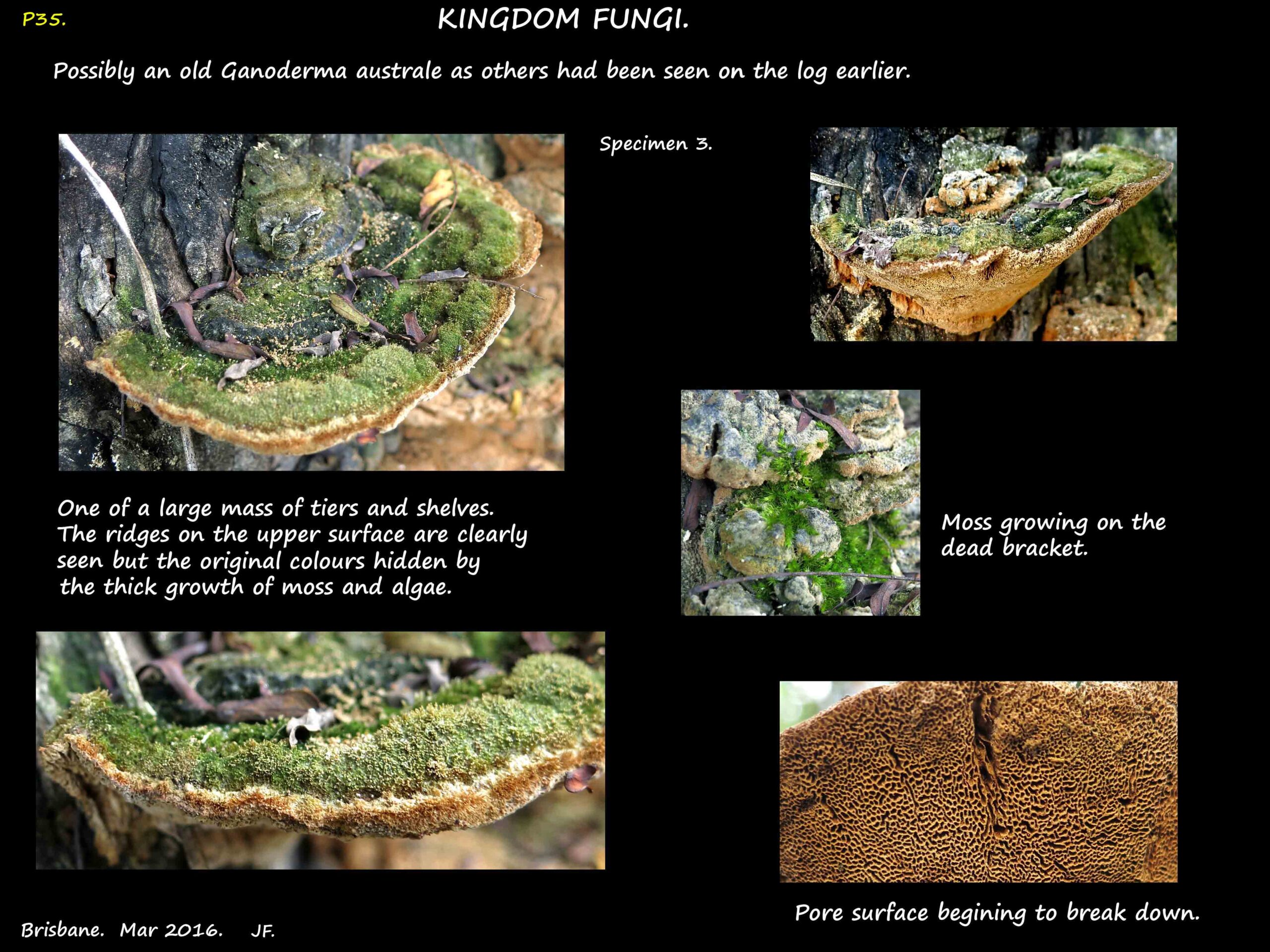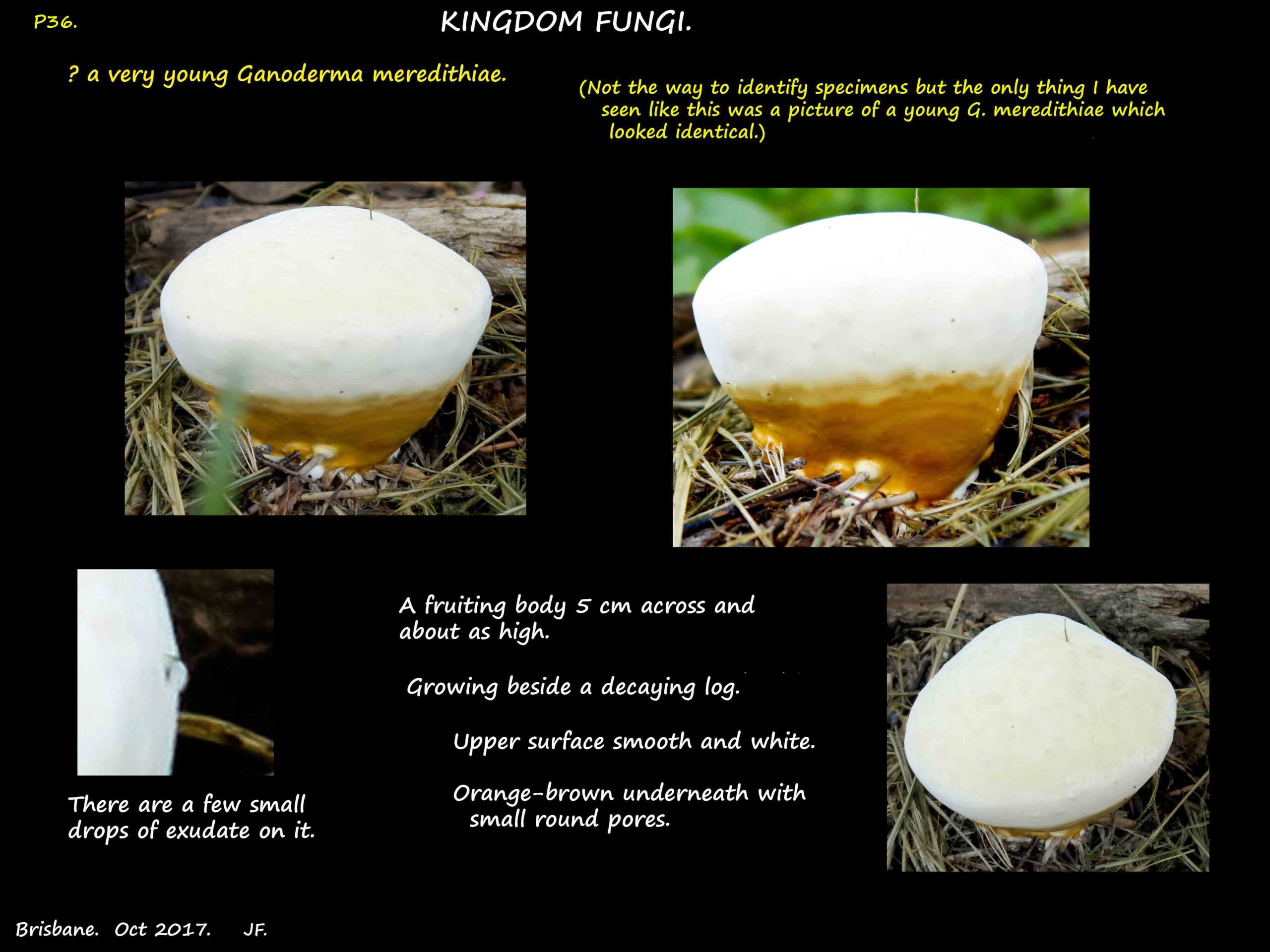Ganoderma australe.
Basidiomycota > Agaricomycetes > Polyporales > Ganodermataceae.
Ganoderma is a genus of about 50 polypore fungi.
They may be difficult to identify because of species variability.
G. applanatum, now G. australe, is common in Australia.
It is a fan shaped or semicircular bracket usually about 25 cm across but up to 50 cm.
It is woody and leathery and may or may not have a stem.
It is found on live or dead trees where it causes white rot.
They usually grow out from a vertical surface but sometimes on a horizontal one.
The upper surface is commonly brown, cracked and ridged.
(Other species may have multicoloured rings of red, orange or purple.)
There is often a rounded, white margin.
The young spore bearing layer underneath is white and bruises easily.
The tubes are 12 mm long and the pores are small – about 4 to 5 per mm.
Brackets are perennial, forming a new spore bearing layer underneath each year.
They can live for many years.
Spores are brown.
J.F.





